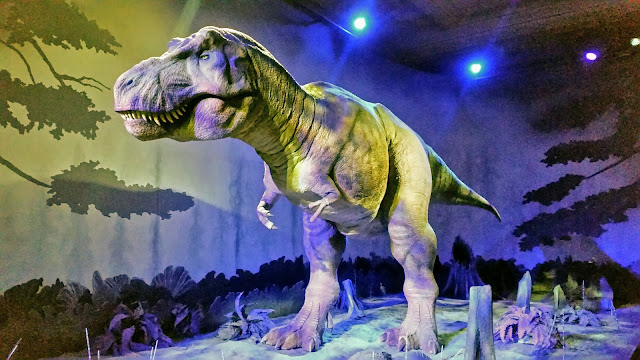 |
| King of the Dinosaurs. |
The Natural History Museum is one of my favourite museums, in the Unfinished City. Housed within a magnificent architectural building, in the heart of Kensington, and with some truly unique specimens on show, it is a wonderland of discovery and learning, for all ages.
Brief History
In 1756, the Natural History Museum began its life in Montagu House, Bloomsbury, home to the British Museum, and was officially titled British Museum (Natural History). The first collections to be displayed were purchased by the British Government from Sir Hans Sloane, a doctor from Ulster. Many of his collections were either destroyed, lost or sold, due to an inability of British Museum staff to adequately preserve the specimens. Of the 5,500 insects listed in Sloane's catalogue, none remained, by 1883. Space at the British Museum was severely limited, and the general public was almost deterred from visiting the natural history exhibits.
It was soon decided that a new museum needed to be built, with adequate resources to preserve specimens, so that future items, which were purchased by the British Government, using public monies, could be displayed to the public. Land was purchased and designs were put forward, in 1863. Work on the new building began in 1873 and was completed in 1880, with the museum opening in 1881. However, the move to the new building was slow, taking a further two years to fully open and, to make matters worse, it was still under the control of the British Museum.
In 1866, when the design for the new museum had been approved, a petition was signed and delivered to the Chancellor of the Exchequer, demanding a separation from the British Museum. This separation battle would continue until the British Museum Act 1963 was passed and the museum became its own entity. However, its name remained as British Museum (Natural History) until 1989, when the museum publicly renamed itself as The Natural History Museum. Following the Museums and Galleries Act 1992 the title of the museum was formally changed to The Natural History Museum.
The Geological Museum, which was adjacent to The Natural History Museum, was absorbed into the latter in 1986. Many of the galleries were rebuilt and were renamed the Earth Galleries, when they opened in 1996.
The Darwin Centre comprises the two newest buildings, in the museum complex, and were opened in 2002 and 2008. Designed as a home for the museum's staff to work on and preserve the tens of millions of specimens in their collection, it is a state-of-the-art building that members of the public can visit.
No comments:
Post a Comment